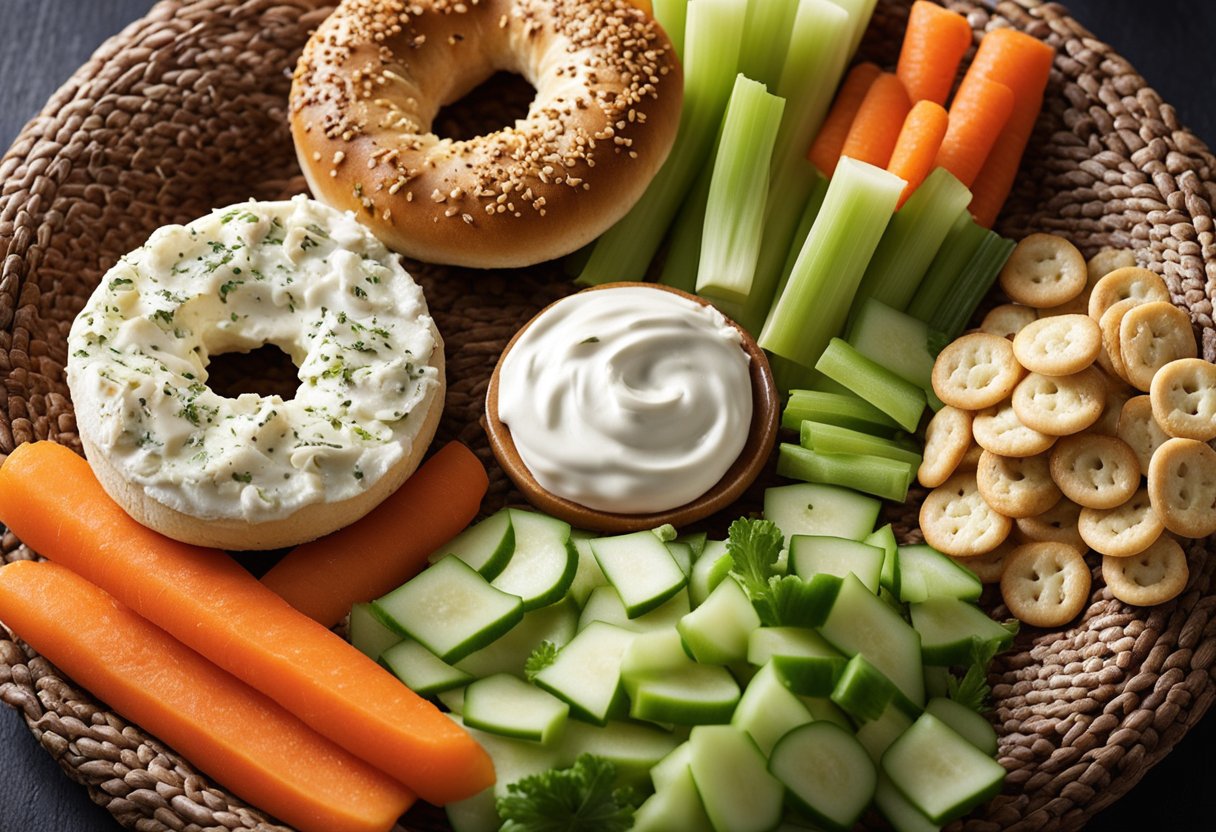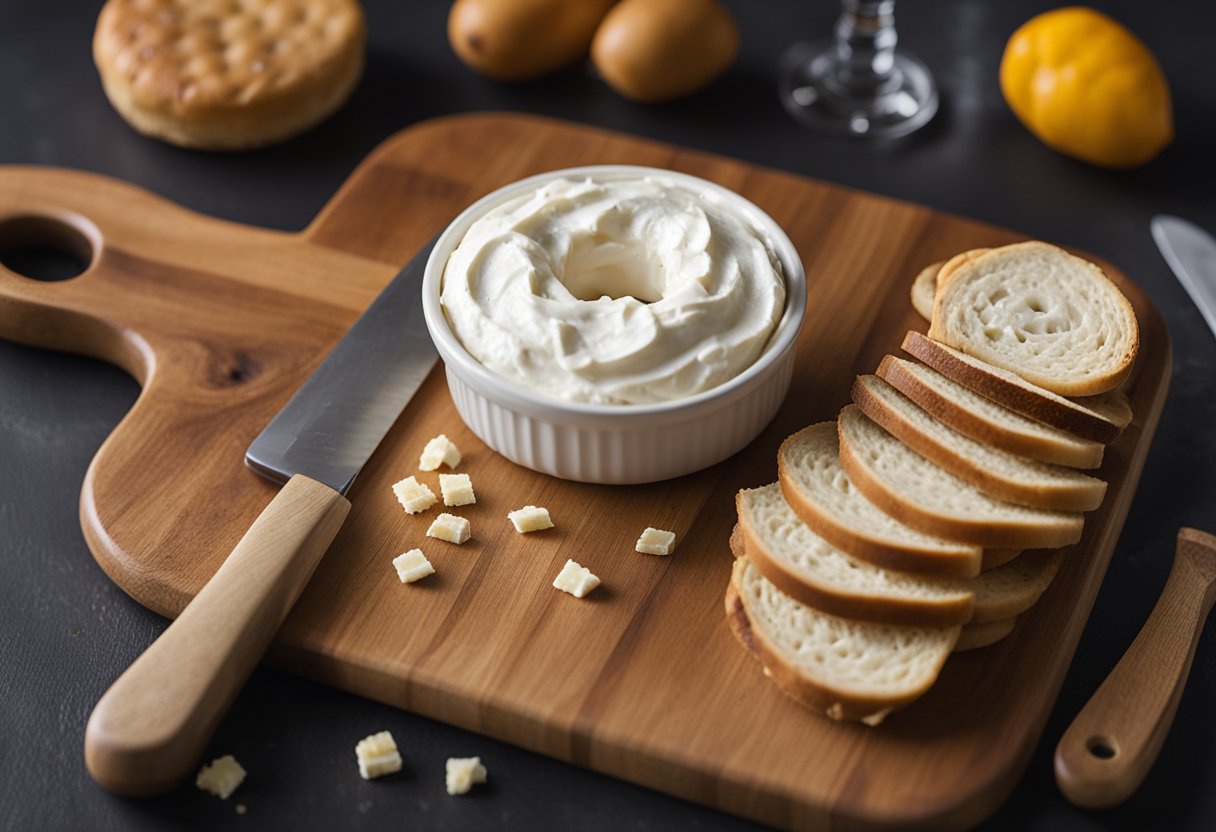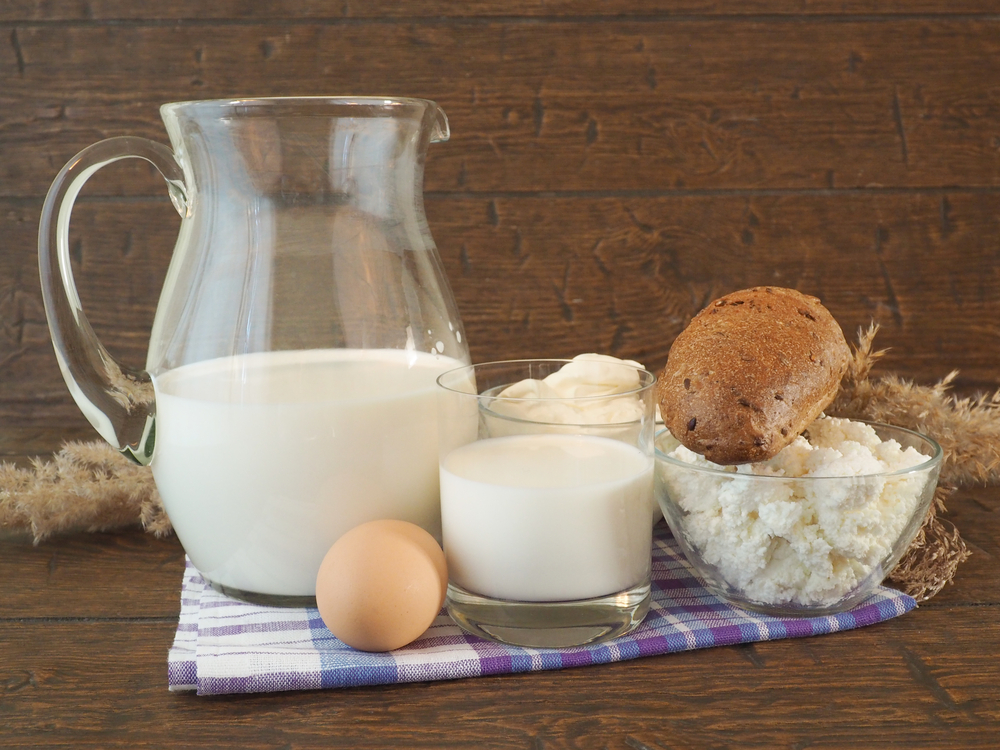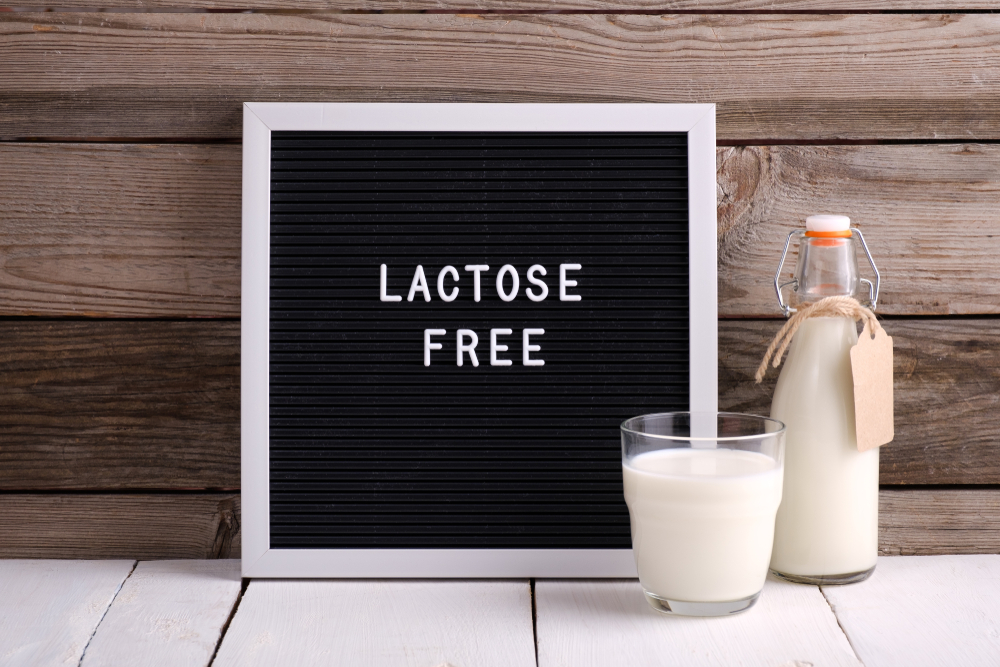Cream cheese is a versatile ingredient that can be used in a variety of dishes, from savory to sweet. It is a soft, spreadable cheese that is made from a mixture of cream and milk, and has a mild, tangy flavor.
Cream cheese is commonly used as a spread on bagels, but it can also be used in cooking and baking to add richness and creaminess to dishes.

When it comes to incorporating cream cheese into your meals, the possibilities are endless. Cream cheese can be used as a base for dips, spreads, and sauces, and can also be added to soups, casseroles, and pasta dishes.
It can even be used in baking to make cheesecake, frosting, and other desserts.
If you’re looking for new ways to use cream cheese in your cooking, there are plenty of options to choose from. Whether you’re looking for a savory dish or a sweet treat, cream cheese can add a delicious creaminess to your meals.
In this article, we’ll explore some of the best ways to use cream cheese in your cooking and baking, as well as provide some tips for storing and handling this versatile ingredient.
Key Takeaways
- Cream cheese is a versatile ingredient that can be used in a variety of dishes, from savory to sweet.
- Cream cheese can be used as a base for dips, spreads, and sauces, and can also be added to soups, casseroles, and pasta dishes.
- Cream cheese can be used in baking to make cheesecake, frosting, and other desserts.
Cream Cheese Basics

Cream cheese is a soft cheese made from a blend of milk and cream. It has a creamy texture and a mild, tangy flavor.
The cheese is made by adding lactic acid bacteria to milk and cream, which causes the pH to drop, and the proteins in the milk to coagulate. The resulting curds are then blended with cream to create a smooth, spreadable cheese.
Regular cream cheese typically contains around 33% milk fat, but can range from 30-36%. Full-fat cream cheese is made with cream that has not been skimmed, while reduced-fat versions are made with skimmed milk or milk with a lower fat content.
To make cream cheese, the milk and cream are pasteurized to kill any harmful bacteria. Stabilizers, such as carob bean gum, are often added to improve the texture and prevent separation.
Cream cheese is a versatile ingredient that can be used in a variety of dishes. It can be spread on bagels or toast, used as a dip for vegetables, or added to sauces and soups for a creamy texture.
Other soft cheeses, such as brie, can be substituted for cream cheese in some recipes, but may have a different flavor and texture. When using cream cheese in recipes, it is important to consider the pH and protein content of the cheese, as well as any additives that may be present.
Nutritional Facts
Cream cheese is a dairy product that is widely used as a spread for bread, bagels, and crackers. It is a versatile ingredient that can be used in both sweet and savory dishes.
In this section, I will discuss the nutritional facts of cream cheese.
Calories
Cream cheese is high in calories. One ounce (28 grams) of cream cheese contains approximately 100 calories. Therefore, it is important to consume it in moderation if you are watching your calorie intake.
Carbs
Cream cheese is low in carbohydrates. One ounce (28 grams) of cream cheese contains less than 1 gram of carbohydrates. However, if you purchase certain types of flavored cream cheese, the carbohydrate content will increase.
Fiber
Cream cheese does not contain any fiber. Therefore, it is important to consume fiber-rich foods along with cream cheese to maintain a healthy digestive system.
Lactose
Cream cheese contains lactose, which is a type of sugar found in milk. Therefore, if you are lactose intolerant, you should avoid consuming cream cheese or choose lactose-free cream cheese.
Saturated Fat
Cream cheese is high in saturated fat. One ounce (28 grams) of cream cheese contains approximately 9 grams of saturated fat. Therefore, it is important to consume it in moderation if you are watching your saturated fat intake.
Health Benefits
Cream cheese contains essential nutrients such as calcium, vitamin A, and protein. Calcium is important for maintaining strong bones and teeth, while vitamin A is essential for maintaining healthy eyesight. Protein is important for building and repairing tissues in the body.
In conclusion, cream cheese is a high-calorie and high-saturated fat dairy product that should be consumed in moderation.
However, it does contain essential nutrients such as calcium, vitamin A, and protein. Therefore, it can be a part of a healthy and balanced diet when consumed in moderation.
Cream Cheese as a Spread

Cream cheese is a versatile spread that can be enjoyed in many ways. It is commonly paired with bagels, but it can also be spread on toast, bread, crackers, and even used as a sandwich filling.
Here are some ideas for what to eat with cream cheese:
- Bagels: Spread cream cheese on a toasted bagel and top with smoked salmon, onions, or cucumbers for a classic breakfast or brunch dish.
- Toast: Spread cream cheese on toast and top with jam, jelly, or honey for a sweet and creamy breakfast option.
- Bread: Spread cream cheese on bread and top with mushrooms, black pepper, or scrambled eggs for a savory breakfast or lunch option.
- Crackers: Spread cream cheese on crackers and top with sliced cucumbers, smoked salmon, or black pepper for a quick and easy snack.
- Sandwiches: Use cream cheese as a sandwich filling and pair it with sliced turkey, ham, or veggies for a delicious and creamy lunch option.
- Oatmeal: Add a dollop of cream cheese to your oatmeal and mix in some almond milk for a creamy and filling breakfast option.
Overall, cream cheese is a versatile spread that can be enjoyed in many ways. Whether you prefer sweet or savory, there are many options for what to eat with cream cheese.
Cream Cheese in Baking
Cream cheese is a versatile ingredient that can be used in a variety of baked goods. It adds a creamy texture and tangy flavor to any recipe.
Here are some ways to incorporate cream cheese into your baking:
Frosting
Cream cheese frosting is a classic frosting for carrot cake, red velvet cake, and other baked goods. It is made by beating together cream cheese and powdered sugar until smooth. You can also add vanilla extract or lemon juice for added flavor.
Cheesecake
Cheesecake is a classic dessert that features cream cheese as the main ingredient. It is made by mixing cream cheese, sugar, and eggs until smooth and baking it in a graham cracker crust. You can also add toppings such as fruit or chocolate ganache.
Cupcakes
Cream cheese can be used in cupcakes to add a tangy flavor and creamy texture. You can make cream cheese frosting to top the cupcakes or add cream cheese to the batter for added flavor.
Pastry Dough
Cream cheese can be added to pastry dough to make it flaky and tender. It can be used in recipes such as danishes, turnovers, and croissants.
Stuffed Chicken Breasts
Cream cheese can be used as a filling for stuffed chicken breasts. Mix cream cheese with herbs such as dill, chives, and parsley and stuff it into chicken breasts before baking.
Meatballs
Cream cheese can also be used as a binder in meatballs. Mix cream cheese with ground meat, breadcrumbs, and seasonings before shaping into balls and baking or frying.
Overall, cream cheese is a versatile ingredient that can be used in a variety of baked goods. It adds a creamy texture and tangy flavor to any recipe.
Cream Cheese in Sweet and Savory Dishes
Cream cheese is a versatile ingredient that can be used in a variety of sweet and savory dishes. It can be used as a spread, filling, sauce, or even as a substitute for butter or oil in baking.
Here are some ideas for incorporating cream cheese into your meals:
Sweet Dishes
Cream cheese is a popular ingredient in desserts, especially cheesecakes. It can also be used in other sweet dishes such as frosting for cakes, fruit dips, and even as a spread for toast or bagels.
For a simple and delicious dessert, try mixing cream cheese with powdered sugar and vanilla extract and spread it on graham crackers. Top with sliced strawberries for a sweet and tangy treat.
Savory Dishes
Cream cheese can also be used in savory dishes. It can be added to sauces, soups, and casseroles for a creamy and tangy flavor.
For a simple savory filling, mix cream cheese with fresh herbs, garlic, and grated parmesan cheese. Use this filling to stuff chicken breasts or mushrooms before baking.
Temperature and Preservatives
When cooking with cream cheese, it is important to consider the temperature of the dish. Cream cheese can separate or curdle if exposed to high heat, so it is best to add it to dishes at the end of cooking.
It is also important to store cream cheese properly to prevent spoilage. Keep it refrigerated and use it within the expiration date.
Sweet and Savory Dishes
One of the best things about cream cheese is its versatility in both sweet and savory dishes. It can be used in everything from breakfast dishes like bagels and cream cheese to savory dishes like tomato soup with a dollop of cream cheese.
For a unique and flavorful spread, try mixing cream cheese with miso paste and spreading it on toast or crackers.
In summary, cream cheese is a versatile ingredient that can be used in a variety of sweet and savory dishes.
From fruit dips to savory fillings, cream cheese adds a creamy and tangy flavor to any dish. Just be sure to use it properly and store it correctly to prevent spoilage.
Storage and Handling

As someone who loves cream cheese, I know how important it is to store it properly to keep it fresh and safe for consumption.
Here are some tips on how to store and handle cream cheese:
- Temperature: Proper refrigeration is crucial for the life of soft cheeses, including cream cheese. Unopened cream cheese should always be stored in the refrigerator at a temperature between 35°F and 40°F (1.7°C and 4.4°C). Once opened, cream cheese should be consumed within seven days.
- Preservatives: Some cream cheese brands may contain preservatives to extend their shelf life. If you prefer to avoid preservatives, look for organic or all-natural cream cheese options.
- Packaging: Keep cream cheese in its original packaging until you are ready to use it. Once opened, cover the remaining cream cheese with plastic wrap or aluminum foil to prevent it from drying out or absorbing odors from other foods in the refrigerator.
- Freezing: Cream cheese can be frozen for up to two months. To freeze, transfer the cream cheese to an airtight container or freezer bag and label it with the date. When ready to use, thaw the cream cheese in the refrigerator overnight.
- Handling: Always use clean utensils when handling cream cheese to prevent contamination. If you notice any mold or an off odor, discard the cream cheese immediately.
By following these simple tips, you can ensure that your cream cheese stays fresh and delicious for all your culinary needs.
Related posts:
Frequently Asked Questions

What are some simple recipes that use cream cheese?
Cream cheese is a versatile ingredient that can be used in many recipes. One simple recipe is to mix cream cheese with herbs and spices to make a flavorful dip.
Another option is to use cream cheese as a base for a creamy pasta sauce. You can also use cream cheese to make a quick and easy frosting for cakes and cupcakes.
What are some non-bagel options for cream cheese toppings?
While cream cheese is often associated with bagels, there are many other delicious options for toppings.
You can use cream cheese as a spread on toast or crackers, or mix it with fruit for a sweet and tangy dip. Another option is to use cream cheese as a filling for stuffed mushrooms or jalapeno poppers.
What are some breakfast dishes that pair well with cream cheese?
Cream cheese is a popular topping for bagels, but it can also be used in many other breakfast dishes. You can use cream cheese as a filling for omelets or as a topping for pancakes and waffles.
Another option is to mix cream cheese with eggs and vegetables for a delicious breakfast casserole.
What are some dinner recipes that include cream cheese?
Cream cheese can add a creamy and delicious flavor to many dinner recipes. You can use cream cheese as a base for creamy soups or as a topping for baked potatoes.
Another option is to use cream cheese as a filling for stuffed chicken breasts or as a topping for grilled salmon.
What are some keto-friendly foods that go well with cream cheese?
Cream cheese is a great option for those following a keto diet, as it is low in carbs and high in fat.
Some keto-friendly foods that go well with cream cheese include celery sticks, cucumber slices, and almond flour crackers. You can also use cream cheese as a filling for keto-friendly fat bombs.
What are some alternative pairings for plain cream cheese?
While plain cream cheese is delicious on its own, there are many other flavors and ingredients that can be added to create unique pairings.
Some options include mixing cream cheese with honey and cinnamon for a sweet and spicy dip, or adding chopped herbs and garlic for a savory spread. You can also mix cream cheese with fruit preserves for a sweet and tangy topping.







